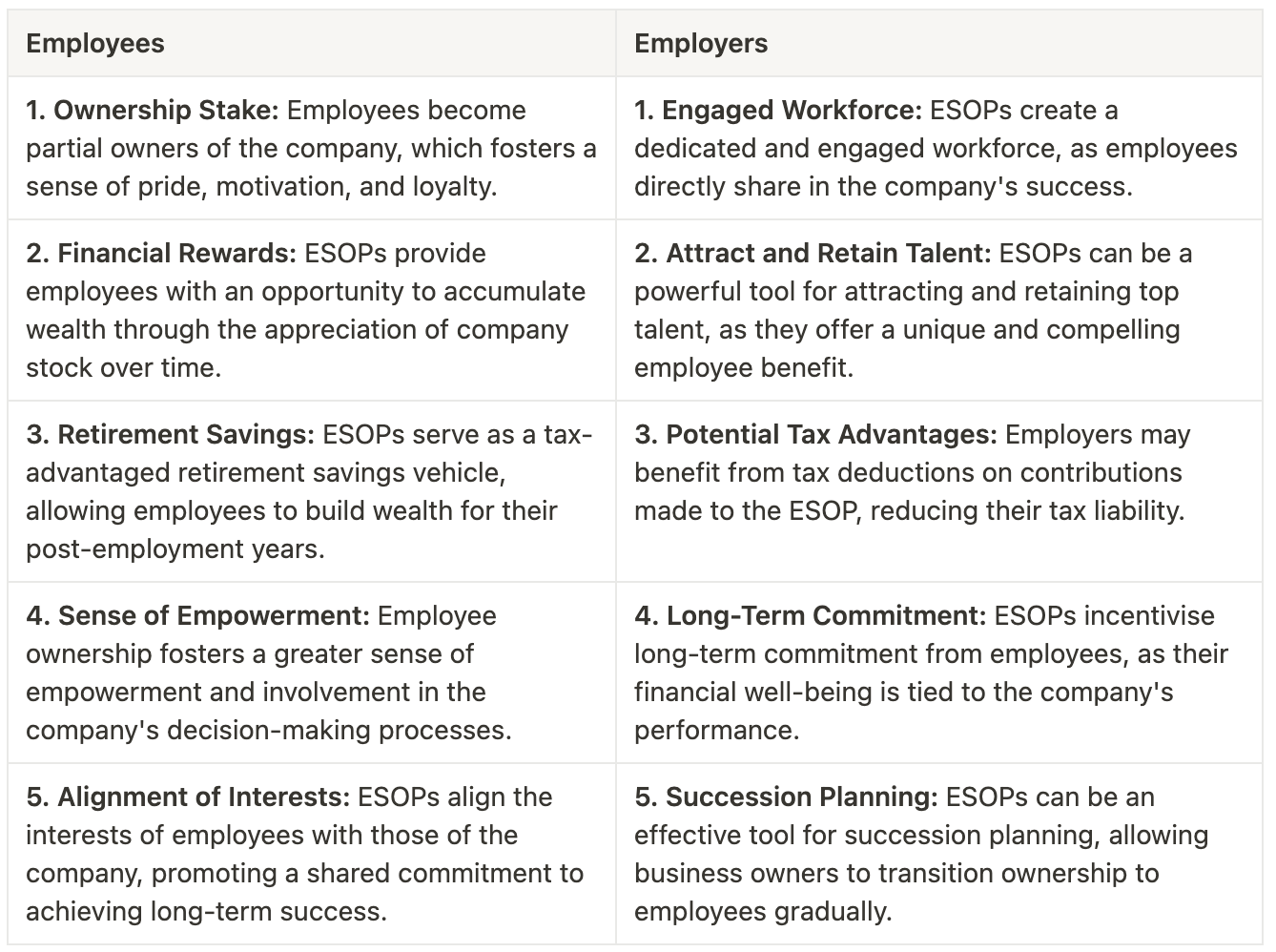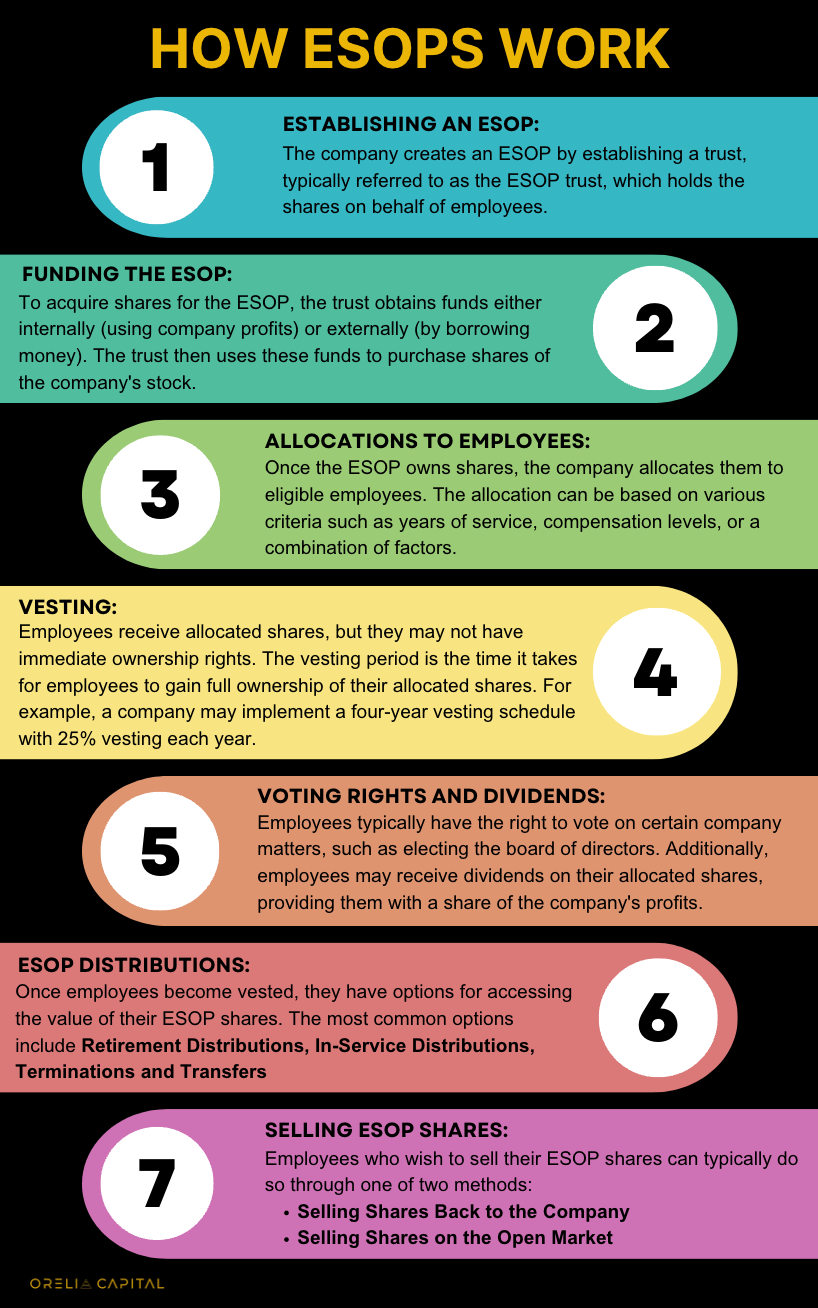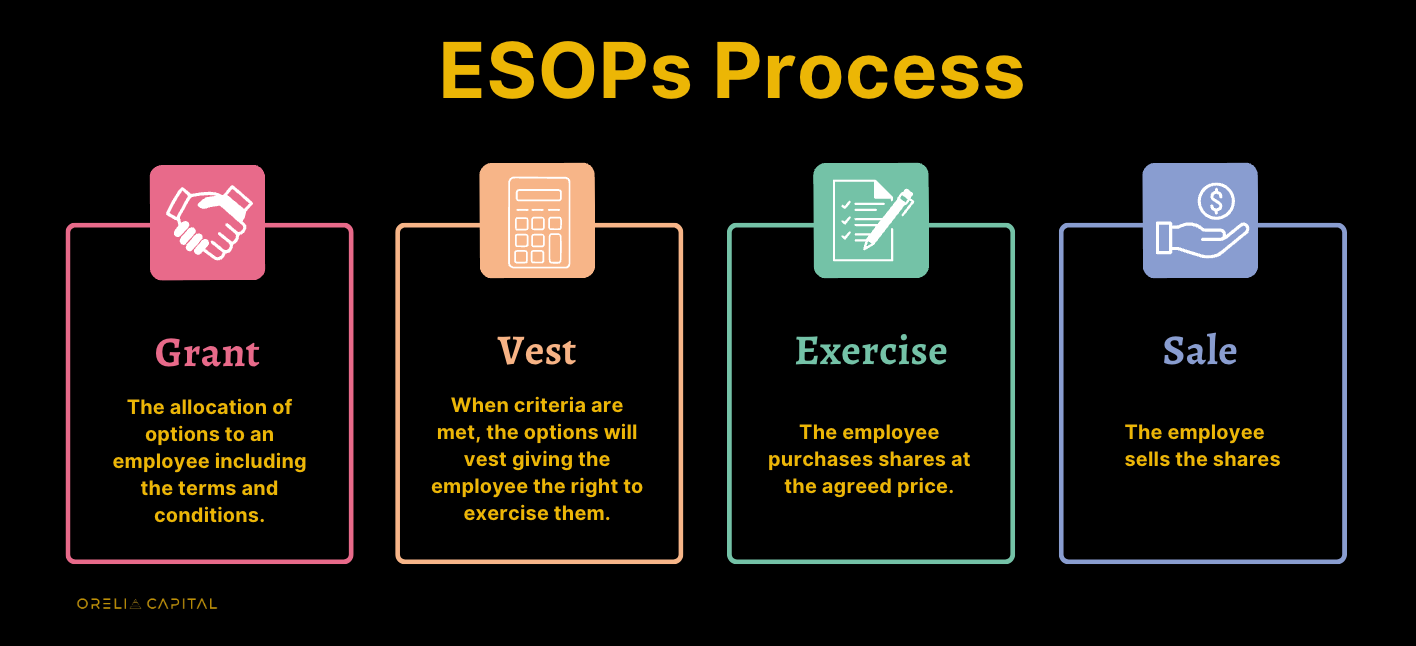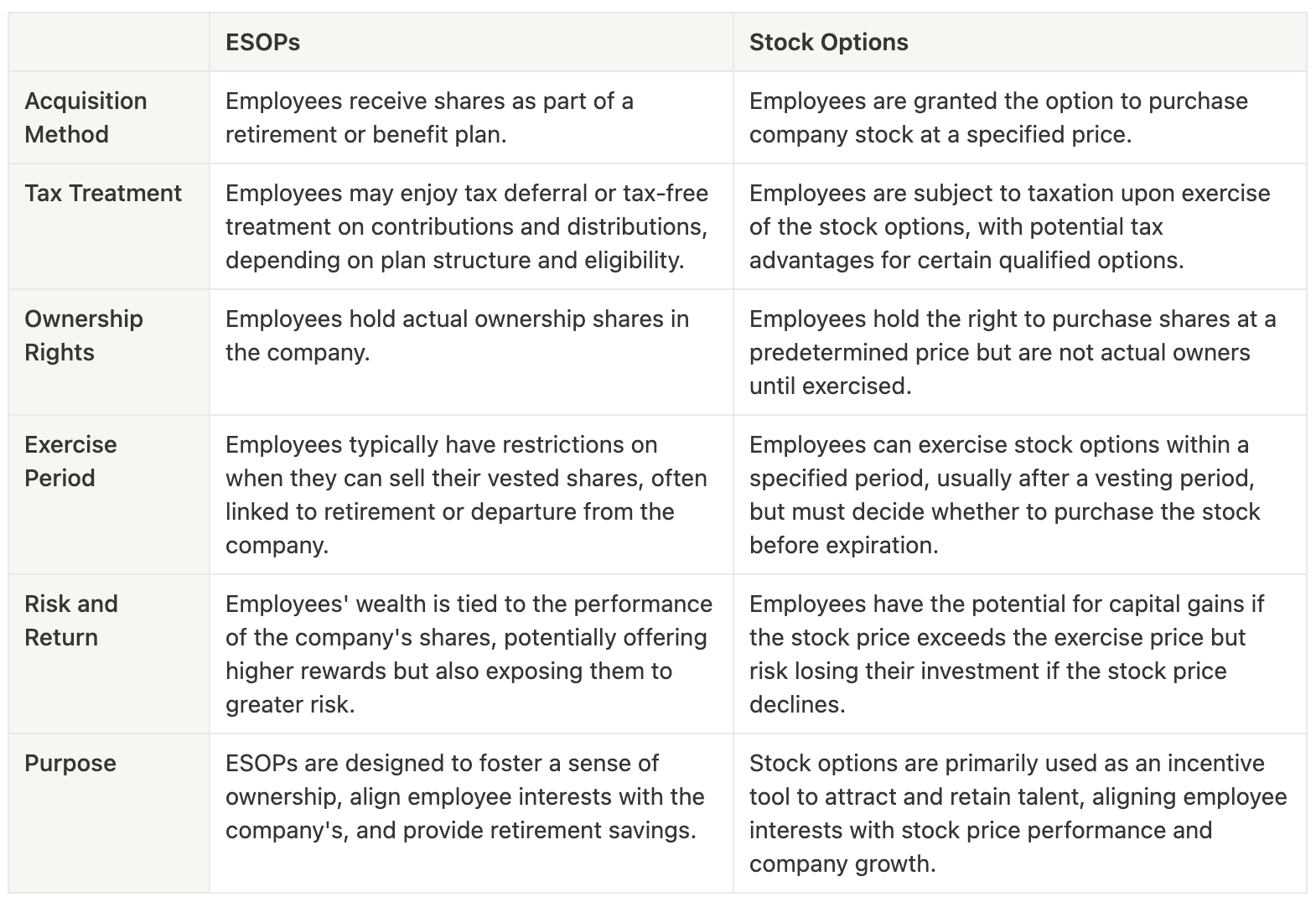Understanding ESOPs: Unlocking the Power of Employee Ownership

Introduction to ESOPs: Understanding the Basics
Employee Stock Ownership Plans (ESOPs) are a powerful tool that allows employees to become partial company owners. By granting employees a stake in the company's success, ESOPs align their interests with the organisation's, fostering a sense of ownership and incentivising long-term commitment.
Here are the key aspects to grasp when it comes to understanding the basics of ESOPs:
What is an ESOP?
- An ESOP is an employee benefit plan that provides a pathway for employees to acquire shares in their company. These shares are typically obtained through direct purchase or as part of a retirement plan.
Purpose of ESOPs
- ESOPs serve multiple purposes. They encourage employees to think and act like owners, as their financial well-being becomes tied to the company's performance. This often leads to increased employee job satisfaction, motivation, and loyalty.
Ownership Structure
- Through ESOPs, employees gain a direct ownership stake in the company. This can be a powerful motivator, as employees have a personal interest in driving the company's growth and success.
Benefits of ESOPs for Employees and Employers


Tax Implications of ESOPs: Key Considerations for Participants
ESOPs (Employee Stock Ownership Plans) provide employees with a valuable ownership stake in their company and come with specific tax implications. Understanding these tax considerations is crucial for participants to make informed decisions and optimise the benefits of their ESOP participation. Here are key points to consider:
Tax Deferral:
- Employees can often defer taxes on the contributions made to their ESOP accounts, meaning they are not immediately taxed on the value of the allocated shares.
- Taxes on the contributions and any associated earnings are deferred until the employee distributes or sells the shares.
Tax-Free Rollover:
- When employees retire or leave the company, they can roll over the proceeds from the sale of their ESOP shares into an eligible retirement plan, such as an IRA (Individual Retirement Account), without incurring immediate tax liabilities.
- This tax-free rollover allows participants to continue deferring taxes until they withdraw funds from their retirement account.
Ordinary Income Tax:
- When employees distribute or sell their ESOP shares, the amount equal to the fair market value of the shares at the time of distribution is generally subject to ordinary income tax.
- This taxable amount is typically based on the employee's marginal tax rate at the time of distribution.
Long-Term Capital Gains:
- If ESOP shares are held for a certain period, typically at least one year, any appreciation in the value of the shares may be eligible for long-term capital gains treatment.
- Long-term capital gains rates are generally lower than ordinary income tax rates, providing potential tax advantages for employees who hold their ESOP shares for an extended period.
Dividends:
- If the ESOP owns shares of a company that pays dividends, employees participating in the ESOP may receive dividends on their allocated shares subject to ordinary income tax in the year they are distributed.
ESOP participants must consult with tax professionals or financial advisors to fully understand the specific tax implications based on their circumstances. Proper tax planning can help participants maximise the benefits of ESOPs while minimising tax liabilities.

Risks and Challenges Associated with ESOPs
- Stock Value Fluctuations: The value of company stock in an ESOP can be volatile, exposing participants to potential losses if the stock value declines.
- Lack of Diversification: ESOP participants often have a significant portion of their retirement savings tied to a single company's stock, which increases the risk of financial instability if the company underperforms.
- Illiquidity: ESOP shares may be less liquid than publicly traded ones, making it challenging for participants to sell their shares when needed.
- Concentration Risk: Employees heavily reliant on their ESOP holdings may face concentration risk, as their financial well-being becomes closely tied to the success or failure of a single company.
- Communication and Education: Adequate communication and education about ESOPs are crucial to ensure participants understand the plan's features, risks, and benefits. Lack of effective communication can lead to misunderstandings or unrealistic expectations.
ESOPs vs. Stock Options: Understanding the Differences

In conclusion, ESOPs provide a unique opportunity for both employees and employers to foster a culture of ownership and shared success. Understanding the basics, benefits, and intricacies of ESOPs is essential for individuals and businesses alike, unlocking the potential for long-term growth and financial security.

We hope you enjoyed this edition of our newsletter. If you found it helpful, please consider sharing it with others who might benefit from this information.
At Orelia Capital, we believe that feedback is a gift. Your feedback can help us improve our content and provide more value to our readers.





